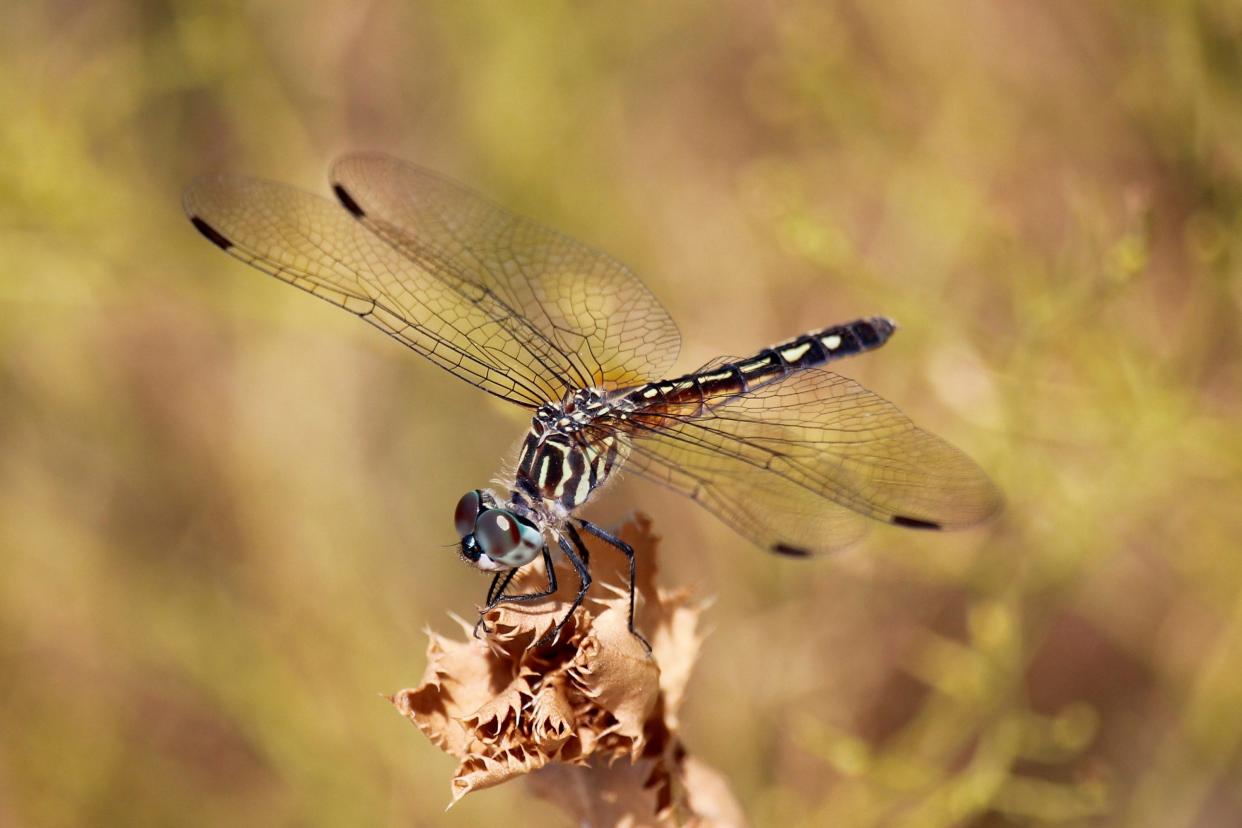Everything to know about the Blue Dasher

Many, if not most, animals rely on camouflage as a defense mechanism from predators, and many times, the colors utilized can be quite dull. However, many winged insects, particularly those in the Order Odonata (comprised of Dragonflies and Damselflies), can be stunning with the vast array of colors exhibited. One such species of dragonfly that fits that bill is the Blue Dasher.
The Blue Dasher (Pachydiplax longipennis) is a medium-sized dragonfly that can achieve body lengths of 1¾ inches and a wingspan of just over 2 inches. Like other insects, it has three body parts: the head, the thorax (what the wings and legs are attached to), and the abdomen. Like many other species of dragonflies, this species is sexually dimorphic in appearance, meaning males and females can be differentiated from each other by coloration and overall build. In adult male Blue Dashers, the thorax is colored a vibrant blue and is adorned with black and yellow stripes. The powder-blue colored abdomen tapers slightly posteriorly while the head has a white face and metallic green eyes. The thorax of adult females looks like that of the male, but the abdomen, rather than being blue, has the same pattern as the thorax and is much blunter than the males. The head lacks the white face, and the eyes are red. The wings are mostly clear with the outer half with a brownish tint, and the six legs are black in coloration.
When perched this species will hold their wings open horizontally at a slight downward angle. This is one of the many ways to differentiate “true” dragonflies and damselflies as the latter will sit with their wings held together, upright, and closed over the abdomen.
As far as dragonflies go, this variety has a widespread distribution. It can be observed throughout the continental United States except for the Great Basin region of the upper Rocky Mountains, as well as southern Canada and northern Mexico. It prefers to reside in areas with permanent or at least semipermanent water sources; it is obviously more common in areas with wetlands, streams, creeks, and rivers.
All dragonflies are predatory insects feeding primarily on flies, mosquitoes, and other small flying insects. Blue Dasher may eat up to 10% of their body weight in a day, which equates to it eating literally hundreds of smaller insects daily. It hunts from a perching position, “dashing” through the air to obtain its prey, hence the common name of Dasher. It will not perch in one spot too long, instead moving frequently to better its chances of feeding. It can be quite aggressive in obtaining its perch, fighting off other Blue Dashers as well as other varieties of dragonflies. The more aggressive individuals are the ones who have a higher success rate of survival.
Blue Dashers, like other dragonflies, are a key indicator on the health of an ecosystem. As habitats decrease, so do the populations of dragonflies. And with the sheer number of insects that just one individual can consume in a day, it is apparent the importance that these flighted creatures play in our environment.
Michael Price is owner of Wild About Texas, an educational company that specializes in venomous animal safety training, environmental consultations and ecotourism. Contact him at wildabouttexas@gmail.com.
This article originally appeared on San Angelo Standard-Times: Everything to know about the Blue Dasher

